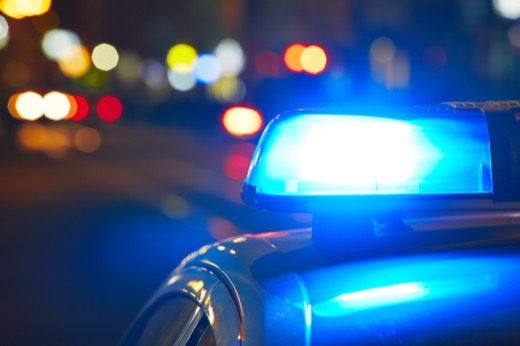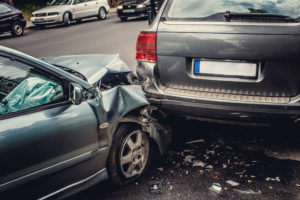Columbus residents saw a massive inferno engulfing the US 33 and I-270 interchange when a gasoline tanker truck crashed and burst into flame. The driver of the truck was killed in the crash, though no other vehicles were involved. The truck was making a left turn when it rolled on its right side, but police are not sure what led to the driver losing control of the vehicle. Some drivers questioned the design of the ramp and the speed limit. With the death of the driver, however, police may never fully determine whether negligence caused the crash.
Defining Negligence
“Negligence” is commonly thrown around when it comes to auto accidents, especially when victims of a multiple vehicle accident are trying to determine what happened and who was to blame. In a legal context, it refers to someone’s failure to exercise the same degree of care that a reasonable person would exercise in the same circumstance. If you wish to sue someone for being negligent, you have to prove more than just a failure to exercise reasonable care.
Elements of Negligence
- A duty of care exists;
- The defendant breached that duty;
- The breach caused harm; and
- The damages resulting from the breach can be remedied by law.
When driving, a multitude of laws govern our behavior on the road to ensure that we—and other motorists—are safe. These laws create lots of legal duties for drivers to exercise reasonable care across a wide variety of circumstances. Violating these laws constitutes a failure to exercise reasonable care.
Things can get more complicated, though, when it comes time to prove that a defendant’s breach of duty caused your harm. Not only does the defendant’s actions—or inactions—have to be the “but for” cause of your harm (i.e., “but for” the defendant failing to stop at the stop sign, the accident would not have happened), the defendant must have been able to foresee that their breach would cause this type of harm.
For example, the defendant ran a stop sign, forcing you to stop suddenly in the middle of the intersection to avoid collision. While you were stopped there, a tree branch fell and hit your car. It is true that the defendant’s actions caused the damage to your car – “but for” the defendant running the stop sign, your car would not have been in a position for the tree branch to strike when it fell. But property damage from falling tree limbs is not the kind of harm that stop sign laws are designed to prevent, moreover the defendant has no real reason to expect that this kind of harm would happen when they ran the stop sign. Therefore the plaintiff would not be able to prove a negligence case against this defendant.
Police Reports
One important tool for determining negligence and fault in a car accident is a police report. For motor vehicle accidents resulting in property damage or personal injury of over $1,000, or a fatality, police have five days to file an Ohio traffic crash report. Officers are trained in investigating and collecting the details of a car accident, they perform such duties regularly, and the forms are quite detailed. Police reports are considered strong evidence for establishing what happened, and can be very persuasive when you are trying to recover damages resulting from an accident. You can request a crash report online, or by mail, though there are small fees for each report and any accompanying photographs.
A traffic crash report contains a great deal of information, including:
- Date, time, and location of the accident;
- Details about the cars involved (i.e., year, make, model, insurance company);
- Descriptions of the vehicle occupants (i.e., seating position, seat belt use, impairments, injuries);
- Whether any citations were issued;
- A narrative description and diagram of what happened;
- What the at-fault driver was doing;
- Driver and non-driver factors contributing to the accident; and
- Weather, road surface, and light conditions.
Since officers are rarely eyewitnesses to accidents, the description of what happened usually comes from those involved in the accident, or nearby witnesses. If there are conflicting statements and the officer cannot determine whose statement is correct, each statement is recorded in the report.
Because Ohio is an at-fault state, the person who caused the accident is responsible for the damages caused. If you were injured by another driver, you would be begin by filing a claim under the at-fault driver’s insurance policy. A claims adjuster from the insurance company will investigate the accident, too. Their job is to reduce the amount the company has to pay out. If the adjuster believes that you were partially responsible for the accident, then the settlement offered would be lowered accordingly. Therefore a police report showing that the other driver was at fault can be an important piece of evidence for supporting your claim and preventing an adjuster from trying to shift the blame—and costs—to you. If the settlement offered is too low, you may wish to proceed with a lawsuit. The police report is usually not admissible as evidence in court directly, but the officer’s testimony based on the report can help your case instead.
If You Are Involved in an Accident, Reach Out to an Attorney
In many accidents, it is not clear that a single party is solely responsible or at fault, therefore it is important to assemble a strong case minimizing your role in causing the accident, and an experienced Ohio auto accident lawyer can prove invaluable. If you were involved in an accident, a lawyer from the Ohio Car Accident Lawyers can navigate through the complicated details of accident reports and insurance claims. We can help you dispute or amend a police report if you believe the officer’s determinations for fault are wrong, for example, or provide advice on how best to document your injuries and property damage to make sure you receive the fullest compensation you deserve. If you believe that the insurance settlement you are being offered is too low, we will pursue your case through the courts for you. Especially for accidents where it is unclear who is at fault, a lawyer from the Ohio Car Accident Lawyers can make a huge difference in your recovery.





